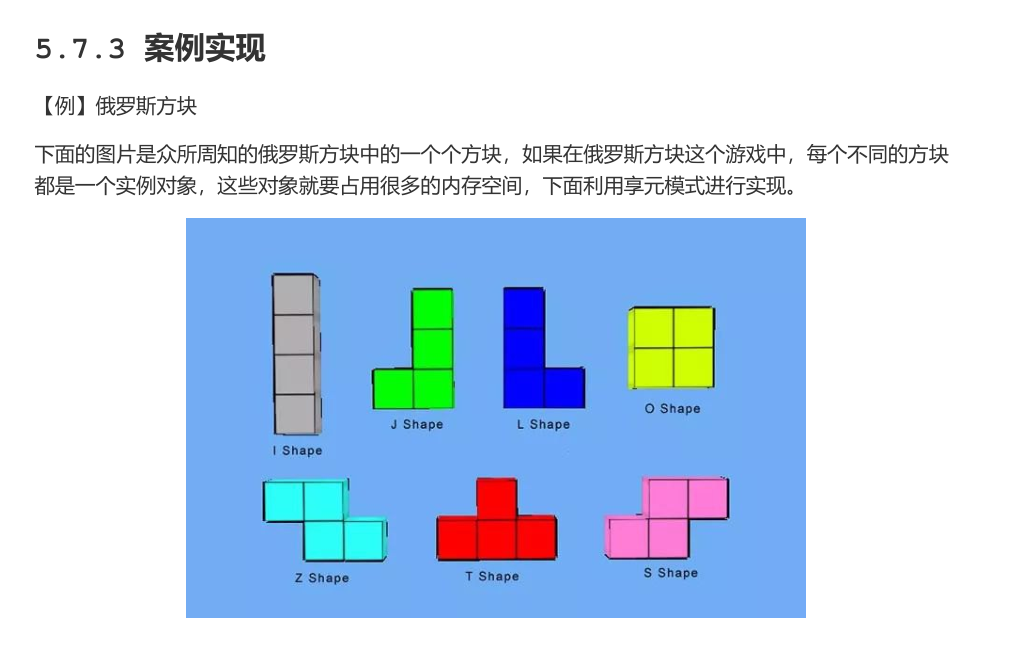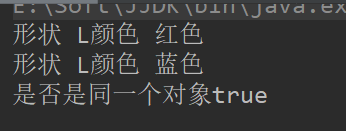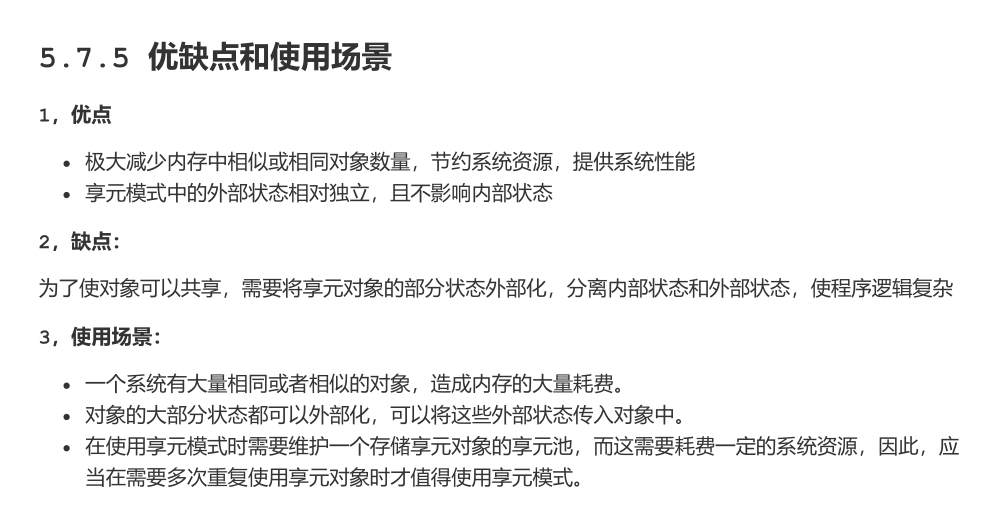设计模式 享元模式
概述

结构

案例

代码
编写一个抽象类 定义共同属性和行为
public abstract class AbstractBox {
public abstract String getSharp();
public void display(String color){
System.out.println("形状 "+this.getSharp()+"颜色 "+color);
}
}
定义几个形状类
public class IBox extends AbstractBox{
@Override
public String getSharp() {
return "I";
}
}
public class LBox extends AbstractBox{
@Override
public String getSharp() {
return "L";
}
}
通过单例模式定义一个工厂类
public class BoxFactory {
private static HashMap<String,AbstractBox> map;
private BoxFactory(){
map = new HashMap<>();
AbstractBox iBox = new IBox();
AbstractBox lBox = new LBox();
map.put("I",iBox);
map.put("L",lBox);
}
public static final BoxFactory getInstance() {
return SingleHolder.INSTANCE;
}
private static class SingleHolder{
private static final BoxFactory INSTANCE = new BoxFactory();
}
public AbstractBox getBox(String key){
return map.get(key);
}
}
测试使用:
public class Test {
public static void main(String[] args) {
BoxFactory factory = BoxFactory.getInstance();
AbstractBox lBox = factory.getBox("L");
lBox.display("红色");
AbstractBox lBox2 = factory.getBox("L");
lBox2.display("蓝色");
System.out.println("是否是同一个对象"+(lBox == lBox2));
}
}

总结



 浙公网安备 33010602011771号
浙公网安备 33010602011771号